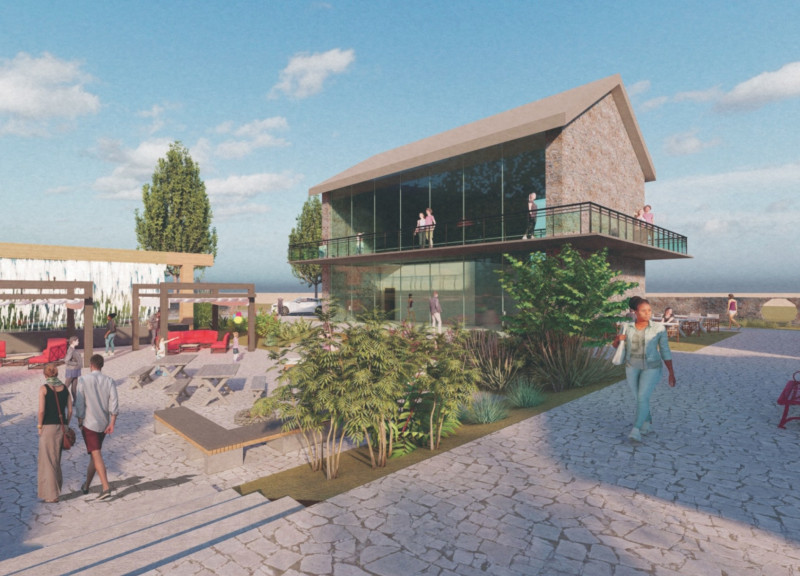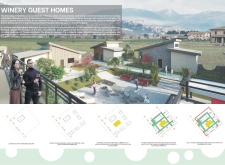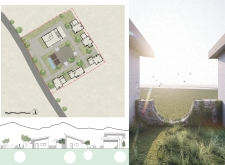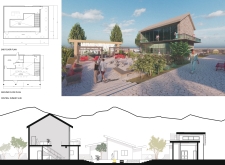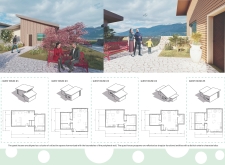5 key facts about this project
The design is located in Tuscany, where it integrates guest accommodations within a winery landscape. The overall concept emphasizes community interaction and a strong connection to the natural surroundings. By creating spaces that blend personal and communal environments, the project takes advantage of the unique features of the site, aiming to foster a sense of place.
Contextual Wall
A key element of the design is a contextual wall that defines the boundary of the site. This wall establishes clear limits while also welcoming visitors. It marks the transition from the external landscape to the interior spaces of the winery. By framing views of the beautiful Tuscan mountains, the wall enriches the experience and provides a sense of belonging.
Guest House Arrangement
Along the perimeter, five guest houses are strategically positioned to form a shared courtyard that serves as a gathering space for visitors. This courtyard is intended for communal activities, including features like a campfire area and landscaped seating. Pathways separate the private spaces of the guest houses, encouraging movement and interaction. This layout reinforces a sense of community while allowing personal retreats.
Sustainability and Materiality
Sustainability is a priority in this design. It focuses on building methods that are appropriate for the local context. Although specific materials are not mentioned, the emphasis on low-cost and sustainable solutions indicates a preference for local resources. This approach enhances the connection between the architecture and the environment while supporting eco-friendly practices.
Architectural Identity
The guest houses are distinct functional units, each with unique external forms that contribute to the visual character of the project. By breaking larger volumes into smaller components, the design avoids overwhelming the landscape. This careful arrangement allows for a balanced relationship between buildings and nature.
In the central courtyard, the communal features create an inviting space for guests to gather. It encourages shared experiences centered around nature and the culture of wine, highlighting the essence of the winery.


